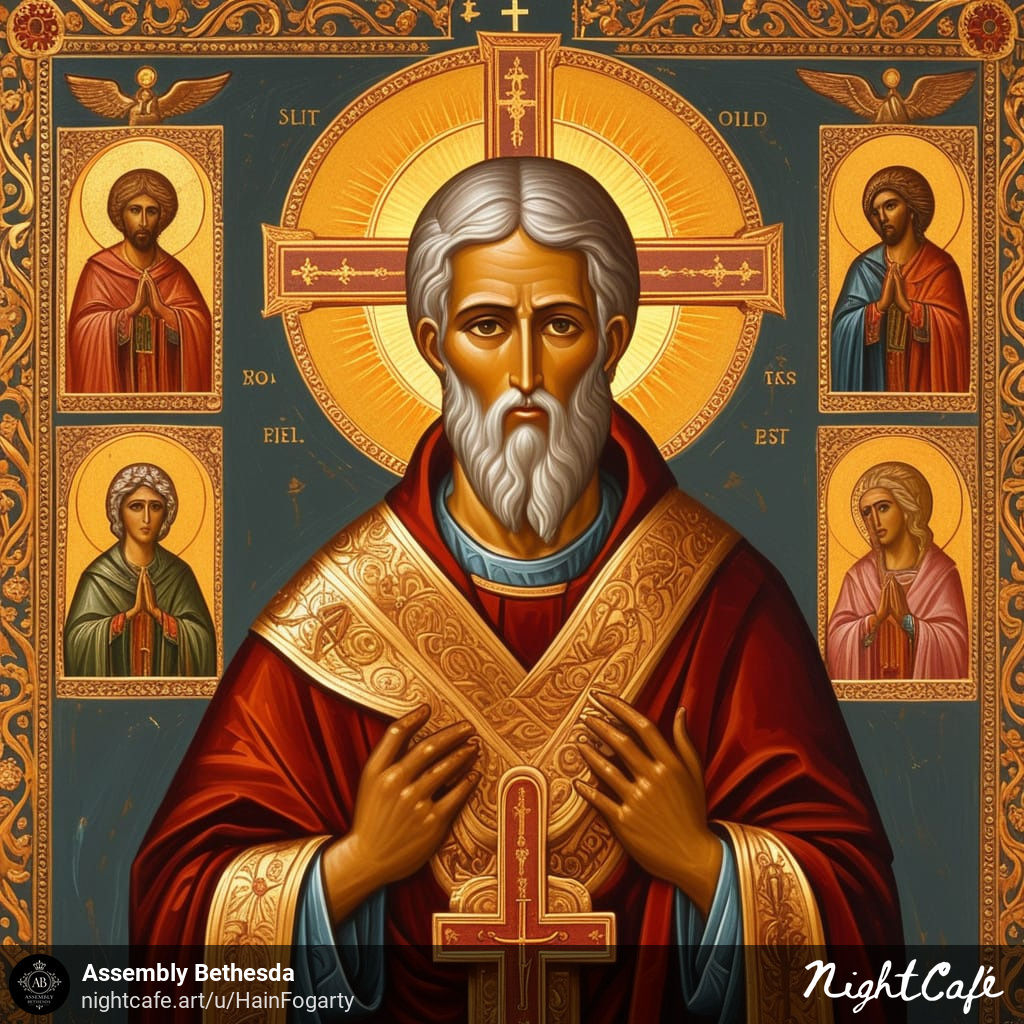In the annals of Christian history, few tales are as captivating as that of Saint Longinus, the Roman centurion whose lance pierced the heart of Jesus, only to ignite his own soul with divine fire. The journey of Longinus from hardened soldier to revered martyr exemplifies the transformative power of faith as he was born in the shadow of the Roman Empire. This blog post delves into his legendary life, weaving threads of scripture, tradition, and timeless inspiration.
In exploring his story, we will discover how one man’s act of duty became an eternal symbol of redemption.
As early as the first century AD, Longinus settled in the rugged landscapes of Cappadocia, a province in eastern Anatolia, modern-day Turkey. This land, etched with dramatic canyons and ancient cave dwellings, bred warriors as resilient as the Anatolian rock itself. Little has been known of his childhood, those formative years cloaked in the anonymity that cloaks most ancient lives.
Rome demanded sons like him, strong of arm and unyielding in spirit, to hold the frontiers against barbarian tides and rebellious subjects. However, tradition paints him as an inexorably drawn to military life, the Empire’s clarion call echoing through his veins.
Longinus had enlisted in the legions by the time he was in his early twenties, the backbone of imperial power. Through sweat-soaked marches and bloodied fields, centurions like him earned their vine-staff insignia, a tight-knit unit of eighty to one hundred men. As a testament to his discipline and valor, honed through the constant grind of training under the watchful eyes of eagle standards, his rise was not the result of a mere accident.
A pagan ritual marked his days, offering offerings for victory to Mars and Jupiter, while his home gods, Mithras and Cybele, lingered in his mind. The Empire’s faceless enforcer, a blade in Caesar’s hand, had no family, wife, or children to soften the edges of his soldier’s existence.
During the year 26 AD, Longinus was transported to Judea under Pontius Pilate’s governorship. In this powder-keg province, the Jewish population was chafing under the Roman yokes of taxation and idolatry. Longinus patrolled the sun-scorched roads lined with olive trees and simmering zealots from Jerusalem’s garrison or Caesarea Maritima fortress.
In addition to quelling Passover riots with phalanxes of shields, escorting tax collectors through hostile villages, and standing sentinel over executions that dotted the Judean hills like macabre signs, his responsibilities were grimly routine. Legends suggest that he suffered from a personal shadow during these years, a gradual blindness dimming his once-sharp eyes, resulting in muted gray shades of color. Even though it was a cruel irony for a man whose vigilance defined his trade, it foreshadowed the light to come.
It was on Friday, April 3rd, 33 AD, that the pivot of eternity took place at Golgotha, the place of the skull. While overseeing the crucifixions of three condemned men, including the enigmatic Galilean Jesus of Nazareth, Longinus remained in the midst of a cacophony of mockery and mourning. During the noon hour, the earth convulsed in protest, while the man on the central cross, scourged and crowned with thorns, uttered words of forgiveness that penetrated the silence.
The Romans regarded Jesus as dead when he hung limp. In a practiced thrust, Longinus drove his longche into the side of the Savior, the lance that would immortalize his name. Early Christians revered blood and water as symbols of Eucharist and Baptism.
It was in that sacred cascade that a miracle occurred. According to tradition, echoed in Voragine’s Golden Legend from the 4th-century Gospel of Nicodemus and Jacobus, droplets splashed on Longinus’ face, dissolving the veil of his blindness instantly. It was as if heaven itself had polished his eyes. He fell to the ground as a result of the quake and the rendering of the Temple veil, proclaiming, “Truly this man was the Son of God,” a statement immortalized in Mark 15:39.
The unnamed figure of the canonical Gospels thus burst into legend, his confession becoming a thunderbolt shattering pagan chains. In response to the miracle, two other soldiers sought baptism from the apostles, but Longinus’ conversion was more profound, causing him to change from an executioner to an evangelist.
The holy spear, now a scepter of truth, was clutched by Longinus as he fled Judea, deserting his post as a marked man, clutching it as a relic of grace. In Cappadocia’s hidden valleys, where cave churches burrow into the earth like secrets, he returned with the same zeal he had shown when he became newly sighted, baptizing converts in crystal clear streams and nurturing a clandestine flock amid Rome’s watchful gaze. In a land in need of hope, his message, drawn from the Gospels he had come to treasure, resonated. However, a kinsman swayed by imperial gold delivered him to his tormentors through betrayal.
A spectacle of cruelty claimed Longinus in 45 AD: teeth were removed from his jaw, eyes were gouged in mockery of the healing he had previously accomplished. Unbroken, Longinus endured, his final breaths a hymn to the Christ he had once wounded. His relics, including the lance enshrined in Vienna’s Hofburg Treasury, bones venerated in distant shrines, and cloths bearing divine stains, became pilgrim magnets, spreading grace throughout the world.
Saint Longinus is the patron saint of converts, the visually impaired, and seekers of truth on the Eastern Orthodox and Catholic calendars today, October 16. Although scholars have examined Longinus’ story through apocrypha and noted scant historical anchors beyond scripture, its essence remains. In a world of divided loyalties, Longinus reminds us that redemption awaits even the most unlikely souls. Grace pierces deepest where wounds run raw. May we, like him, see clearly in the light of the Cross.
Until Next Time. Be Blessed and Courage.

